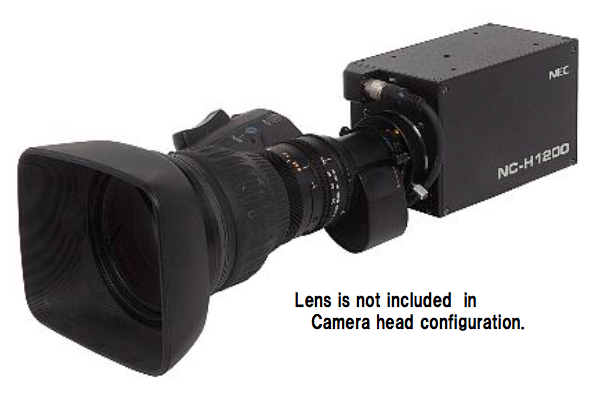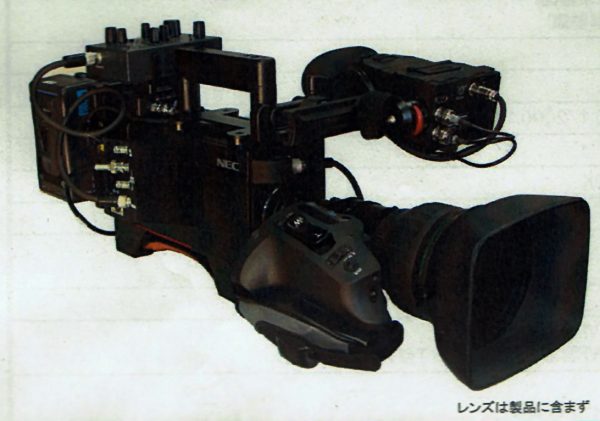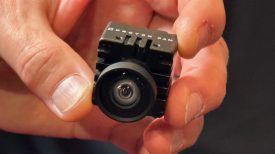By technical editor Matt Allard:
The Sony a7S may well be the current large sensor low light king – but what if you need a more conventional broadcast camera for live TV in very low light environments?
At Inter BEE in Japan this week NEC were showing two cameras to do just that. The NC-H1200P and NC-H1200 ultra-high-sensitivity broadcast cameras both use 2/3” CMOS sensors to record HD images. Targeted specifically at TV broadcasters the NC-H1200P looks like a traditional broadcast camera, while the NC-H1200 is a smaller block unit that is designed specifically to be left unattended or for use on a helicopter.

They are both equipped with image sharpening technology that NEC call CLEAR VIEW. This helps to reduce noise and improve the signal to noise ratio of lowlight scenes. They also features a haze reducing function to further improve the visibility at a distance.
Both cameras have a sensitivity in the near infrared region when using a “IR-PASS function”. Being designed for live broadcast environments they can be controlled with a FAW (automatic white balance function) and ASC (automatic sensitivity features) to support 24-hour continuous monitoring so no adjustments are required either day or night.

I did a very quick and highly un-scientific video sample with the NC-H1200P – filming a very dark scene behind black curtains set up on the NEC booth. I then pointed my own a7S at the same scene and ramped up the ISO to get a similar image. I would never expect a 2/3″ chip to be as good in low light as the a7S, but none the less it is incredible to see such a small sized sensor achieve these results – something previously impossible with any other 2/3 inch news camera I’ve used. For broadcasters who are used to struggling with the low light capabilities of 2/3″ ENG cameras at big sports games and live events there is now an option for much better low light performance.





